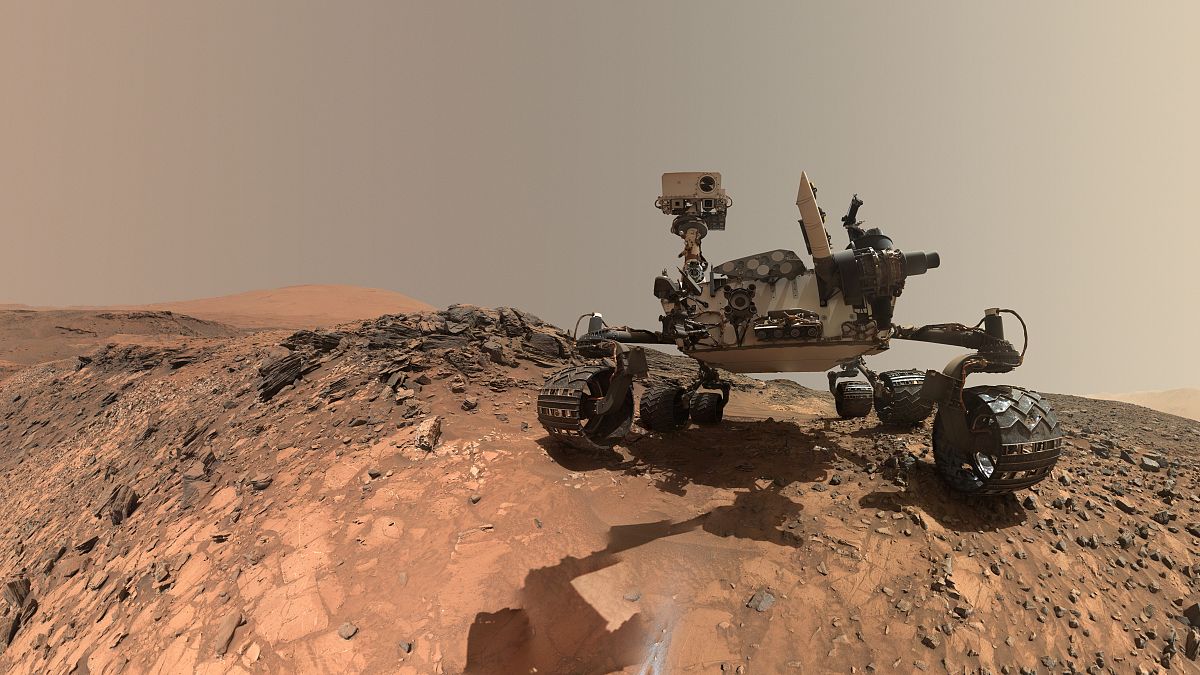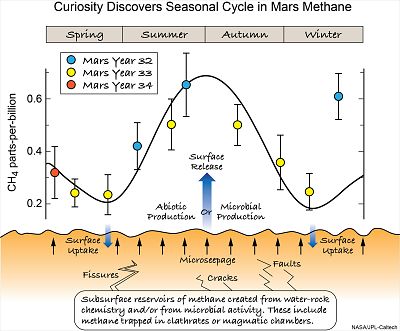NASA's roving science lab has uncovered tantalizing new evidence of organic molecules on the red planet.
New discoveries by NASA's Mars rover Curiosity add to a growing body of evidence supporting the idea that microscopic organisms might once have lived on the red planet — and have some scientists considering the possibility that microbial life might live there still.
As described in a pair of scientific papers published today in the journal Science, Curiosity detected a range of carbon-containing compounds in ancient sediments on Mars and shifting levels of the organic molecule methane in the Martian atmosphere.
"Both these discoveries are breakthroughs in astrobiology," Inge Loes ten Kate, an astrobiologist at the University of Utrecht in the Netherlands, said in a written commentary published along with the papers. She said "the question of whether life might have originated or existed on Mars is a lot more opportune now that we know that organic molecules were present on its surface" in the distant past.
Years ago, the Curiosity rover found evidence that liquid water and the chemical ingredients for microbial life once existed on Mars. But in one of the new discoveries, the car-sized rover found that levels of methane in the Martian atmosphere vary widely from season to season, with levels peaking at the end of summer in the planet's northern hemisphere.
In the paper about the new finding, Christopher Webster, a senior research scientist at NASA's Jet Propulsion Laboratory in Pasadena, California, and his co-authors conclude that "the amplitude of the seasonal cycle indicates that there remain unknown atmospheric or surface processes occurring in present-day Mars.
But the scientists hypothesize that seasonal temperature shifts cause methane buried under the planet's surface to seep into the atmosphere through cracks and fissures in the surface (see diagram below).
Methane can be produced by simple nonbiological processes, but on Earth it's created mostly by microorganisms — a fact that led some scientists to consider the full range of possible sources of the Martian methane.
"The discovery that methane gas is being released on a seasonal basis from the Martian subsurface means that there are active processes happening in the Martian subsurface today, which could include heated reactions between water and rocks, possible biological activity, or some other mechanism," Kirsten Siebach, a planetary geologist at Rice University in Houston, told NBC News MACH in an email.
The rover also found that ancient sediments dating back more than 3 billion years contained a variety of organic molecules, a discovery described in the other paper, which was co-authored by Jennifer Eigenbrode, a biogeochemist at NASA's Goddard Space Flight Center in Greenbelt, Maryland.
While organic molecules are commonly considered molecules of life, it's known that they can be created on planets by nonbiological processes and delivered to planets by comets, asteroids, and other celestial objects. "They are therefore expected to exist on the Martian surface," Loes ten Kate said in the commentary. "More speculative is the possibility of past or even present life on Mars."
Siebach said that while neither of the new discoveries "require life in the past or present, they present compelling evidence that Martian life could have existed in the past, that if it did we have a chance of finding evidence of it, and that there are ongoing reactions deep below the surface of Mars that could potentially be related to liquid water or life."
Curiosity, a tool-studded robotic vehicle weighing about 2,000 pounds, has been exploring Mars and conducting experiments for almost six years. It was launched from Cape Canaveral on Nov. 6, 2011 and landed on Mars on Aug. 12, 2012.

